It could be said that the definition of a great design is one that begs the question, “Why didn’t I think of that?” At the 1996 Basel Fair, the watch industry must have been asking itself the exact same question when it first saw the Patek Philippe Annual Calendar ref. 5035. This never-before-seen movement did something seemingly simple: it automatically adjusted the calendar indication for months of 30 or 31 days, leaving the owner to manually adjust the date once a year at the end of February. But behind such an obviously useful mechanism was pure genius: Philippe Stern and Patek Philippe’s design and engineering department .

As with his predecessors, then Patek Philippe president, Philippe Stern was constantly striving to provide his customers with what they needed, not just watchmaking marvels that would be the privilege of very few connoisseurs. By the mid 1990s, there was a noticeable jump in price between a time-only and a complicated watch. A Calatrava ref. 3919 was 9,350 USD, but a perpetual calendar ref. 3940 was around 45,000 USD. Philippe Stern realized that price differential had to be filled if his clients could start to move up the ladder of watch collecting. Just as importantly, he wanted to provide something useful, rather than just another complication that would only be used occasionally, if at all. This started his quest to develop “useful complications” and a new generation of innovative, user-friendly watch movements that would change the fortunes of the company.

By the early 1990s, the mechanical watch industry was slowly recovering from the onslaught of the Quartz Crisis. Interest in complicated watches was increasing, in part thanks to Patek Philippe and its introduction of the Caliber 89 (to celebrate its 150th anniversary in 1989) which received world-wide recognition. Many watchmakers were encouraged to venture back into production, but Philippe Stern realized that to sustain growth in this fragile era, he needed to introduce a new sector to the mechanical watch market. The ever-astute businessman appreciated the need to widen the circle of potential customers by offering complications that would be more accessible, not only financially but in terms of ease of use.
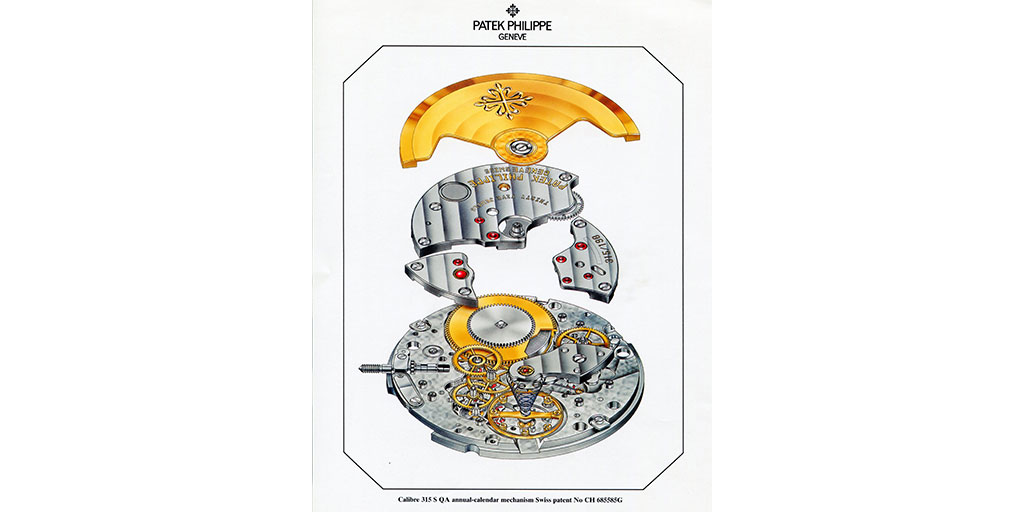
The initial challenge to invent a movement that would meet this goal was first given in 1991 as a diploma topic, based on specifications by Patek Philippe’s design and engineering department, to final-year students at the Geneva School of Engineering. This type of collaboration with schools and universities is a tradition at Patek Philippe. It continues, for example in Neuchâtel, in research into micro technologies. The creative exchange is stimulating for both sides and can result in a much sought-after job at the Patek workshops, as was the case for one of the graduates who worked on this project.
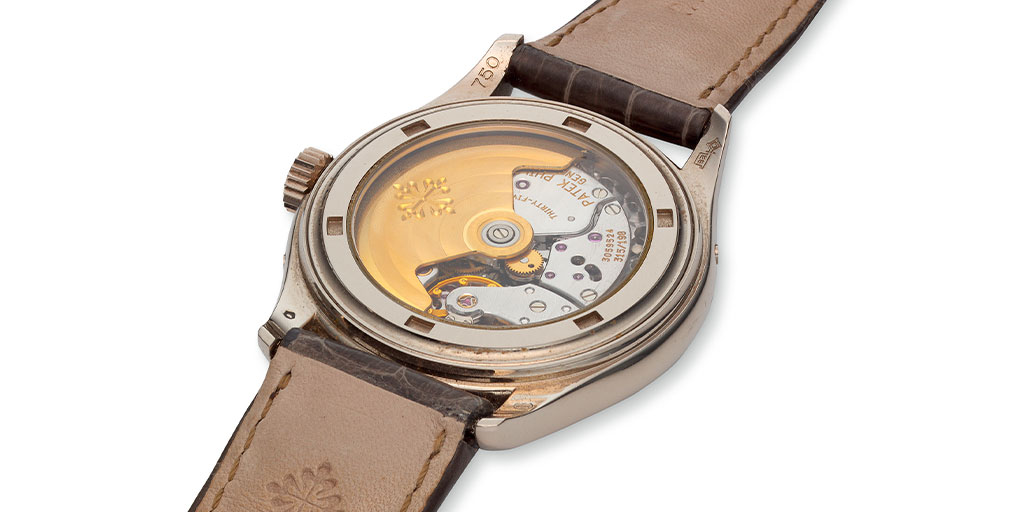
Instead of adapting a perpetual calendar movement, the students were required to use a calendar wristwatch as the base. This forced the young engineers to develop a mechanism that is entirely rotary in construction, substituting a series of wheels and pinions for the jumper springs, cams, and racks of the classic perpetual calendars. The new system, refined and patented by Patek Philippe, included a clever addition to the 24-hour driving wheel which has two finger pieces set at an angle to one another. The first advances the date wheel once a day. For the months of April, June, September, and November, the second finger comes into play, advancing the date wheel from 30 to 1, skipping the 31st day. This process is completed in four hours. The fact that the wearer must adjust the watch at the end of February is where the real cost savings come into play. This is because, the movement no longer needs the complicated cam on a perpetual calendar that predicts the sequence of days over a 48-month period and reduces the sequential pattern of months over four years to four mechanical date changes. Even though the Annual Calendar movement is simpler than a perpetual calendar, the movement has more parts: 324 vs 280 – simplicity is complicated.
Patek never claimed to have invented the Annual Calendar, but before the students at the Geneva School of Engineering and the company’s design and engineering department set to work in the early 1990s, there had not been any movement like it on the market.
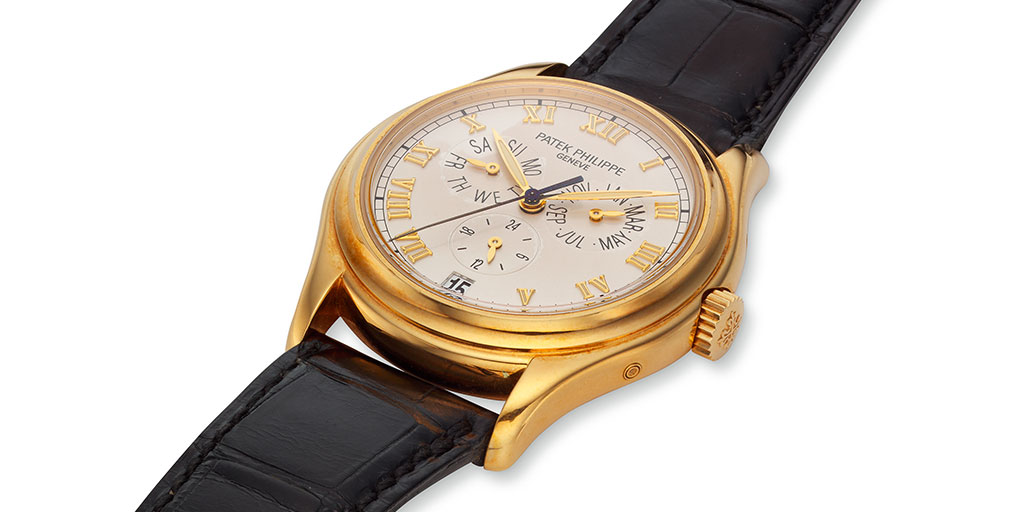
In the fall of 1996, the ref. 5035 was crowned “Watch of the Year” by the Swiss magazine Montres Passion at a time when awards were few. The jury unanimously agreed that apart from the high standard of aesthetics and technical achievements in line with what would be expected from Patek, the ref. 5035 offered a complication that was useful, simple, and entirely new. It also looked really good.
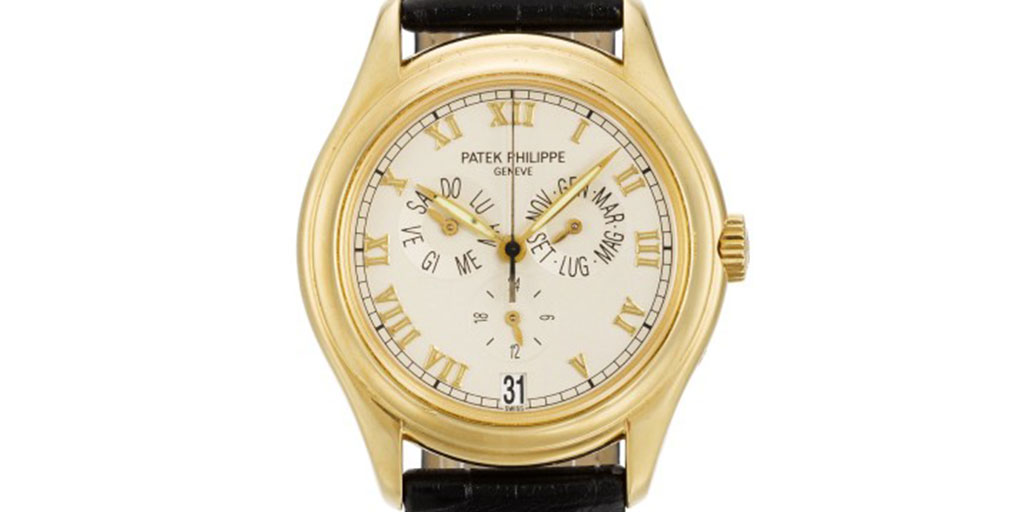
The dial was extremely legible and perfectly balanced. With dial making in Philippe Stern’s DNA, a beautiful, distinctive dial was paramount to complement the new movement (Stern Frères, later Stern Créations had been making dials for Patek since 1907; and in 1932, the Stern family purchased Patek Philippe). The dial needed to differentiate the watch from a perpetual calendar, so some new features appeared. For example, the date is indicated not by an auxiliary dial, as in many perpetual calendars, but by the number in an aperture at six o’clock, making it easy to read. There is a center seconds hand, a feature not offered on perpetual calendars. The bold Roman numerals and hands have a luminous coating which is rare in a Patek, and as a final flourish, for the first time an IV rather than a IIII is placed at four o’clock.
The ref. 5035 retailed in 1996 for 17,500 USD and was an instant success. Here was a watch to fill the price difference between a time-only between 9,000 – 13,000 USD and a perpetual calendar at 45,500 USD. The Annual Calendar was sought after not only by watch enthusiasts wanting to own a complicated Patek, but also established collectors who loved the new movement and its’ simple, elegant esthetic.
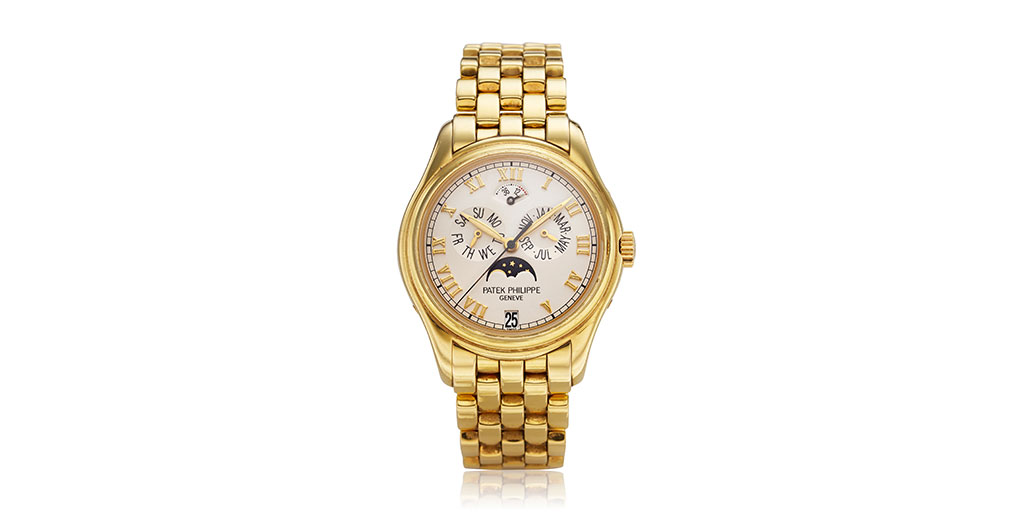
Two years later in 1998, a new Annual Calendar movement caused the next sensation. The ref. 5036/1 incorporated the main features from the award-winning ref. 5035 but added a power-reserve at 12 o’clock and a moon-phase indicator above the date aperture at six o’clock. The moon-phase is particularly impressive as it is so accurate, it only needs to be corrected by one day every 122 years. Presented in 18K yellow or rose gold with a silvery-white dial and in white gold with a black dial, the ref. 5026/1 is complemented by a specially designed bracelet made from polished links designed for strength and suppleness. In 2005, the ref. 5146 replaced the first Annual Calendar ref. 5035 with a slightly larger case size (39mm vs 37 mm), and the moon-phase indicator became part of every Annual Calendar model from then on.
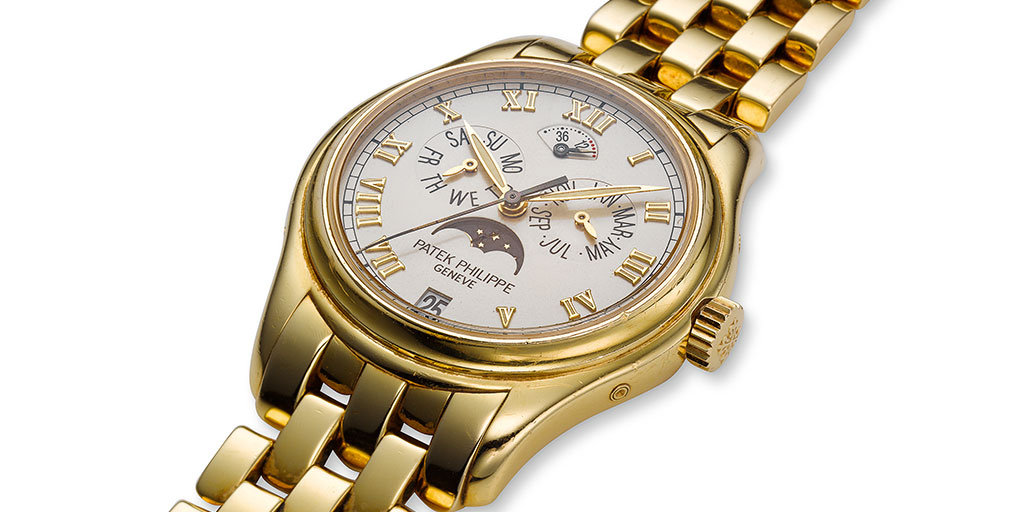
From 2004, things started to heat up and an impressive number of Annual Calendar models were regularly introduced. In this article, we will look at some of the most innovative models. First in line was ref. 5135 Gondolo Calendario, featuring a magnificent, tonneau-shaped case housing a new self-winding movement caliber 324/205 and a new, arched arrangement of month, day, and date in three apertures.

In Patek-speak, Gondolo designates a collection of ‘form’ watches that includes square, rectangular and tonneau. The exotic name of this watch comes from the legendary Chronometro Gondolo family of timepieces that Patek Philippe made exclusively for its important Brazilian distributor Gondolo & Labouriau in the first half of the twentieth century. (In Brazil, these watches were so prized that the name Patek became the generic term for watches.) The new caliber features a multitude of innovative details. It has a frequency of four hertz, which is the equivalent of 28,800 vibrations per hour. This is fast enough to assure a steady rate, but moderate enough to prevent oil from being thrown out of the bearings. This benefits the long-term reliability of the movement. To improve the efficiency of the automatic winding, the 21K central rotor was enlarged – the added mass generates more winding power. Even the legendary Gyromax was modified. The traditional two-arm construction with eight moveable weights was replaced with a four-arm design with only four weights. This offers greater torsional rigidity, and the smaller number of weights simplifies adjustments without compromising accuracy. Last but not least, the caliber 324/205 has a totally new toothing profile for the wheels and pinions that optimizes the transition of power from the barrel to the balance, enhancing yet again, the accuracy and reliability of the movement.
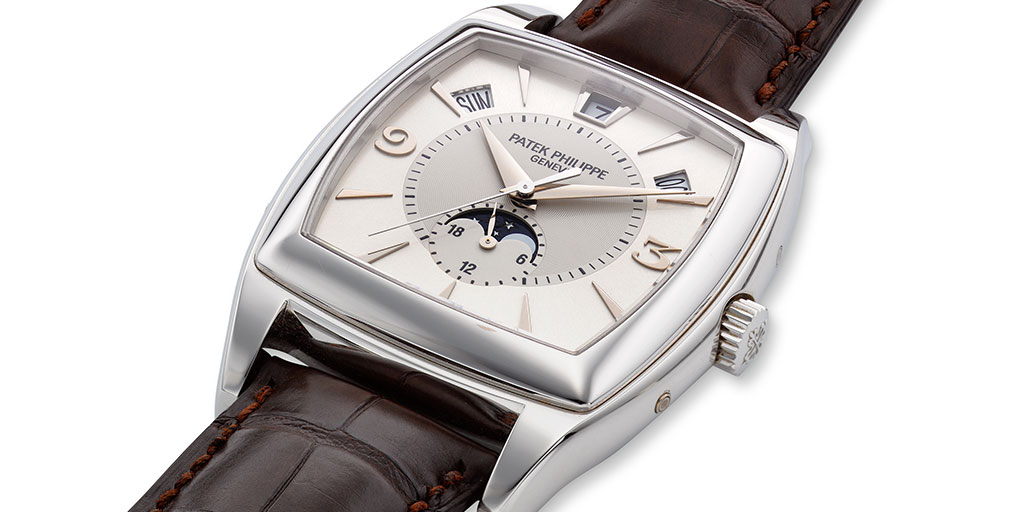
Such an innovative movement deserved an equally innovative case. With its sculptural, tonneau-shaped case band and cushion-shaped bezel, the case pays respect to the grand tradition of Patek watches from the 1930s, and the art deco style that first inspired the tonneau shape. This case is a technical achievement as it is extremely complex to make and a challenge for both the case maker and polisher. The 18K yellow gold version features a silvery opaline dial, and the white gold version features a slate gray dial. Contrasting finishes – the center of the dial has a circular azure pattern, while the outer has a satinized sunburst pattern – lets the dial shimmer with a two-tone effect. The bold case – just over 40 mm – was considered large at the time and sales were initially slow. However, this visually striking watch has now become a classic, Patek masterpiece and a collector’s favorite.
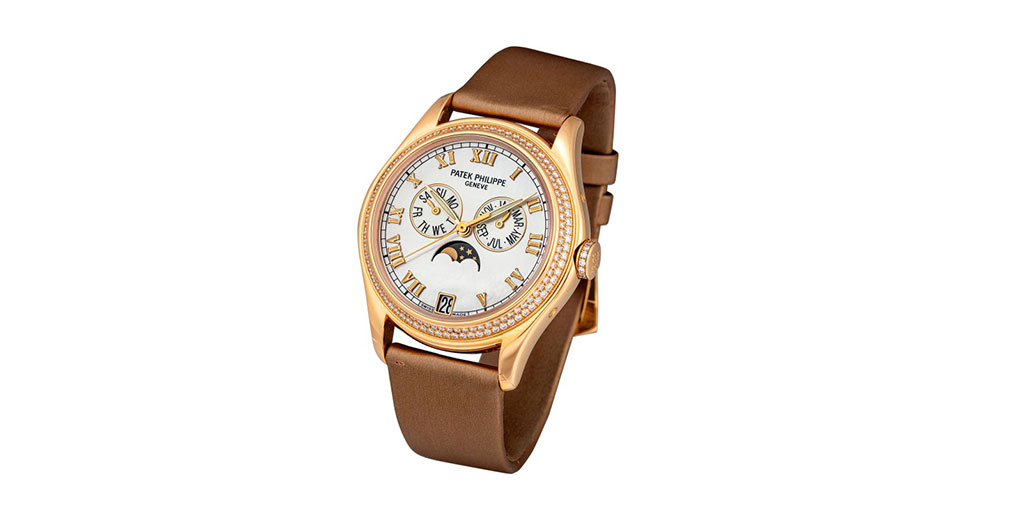
Next came a nod to the ladies in 2005, with the ref. 4936 – the first Annual Calendar for ladies and a significant step for the company in recognizing that women like complications too. Available in 18K white gold with a black mother-of-pearl dial, and yellow gold with a white mother-of-pearl dial, the 37 mm case was set with 156 Top Wesselton diamonds. Ref. 4937 in white gold and set with 432 diamonds was launched in 2006; a rose gold version launched in 2009. By 2015, the ref. 4937 was replaced by ref. 4948R which housed the caliber 324 S QA LU self-winding movement in a 38 mm rose gold case, set with 347 diamonds. The striking dial made of white Balinese mother-of-pearl, featured gold applied Breguet numerals.
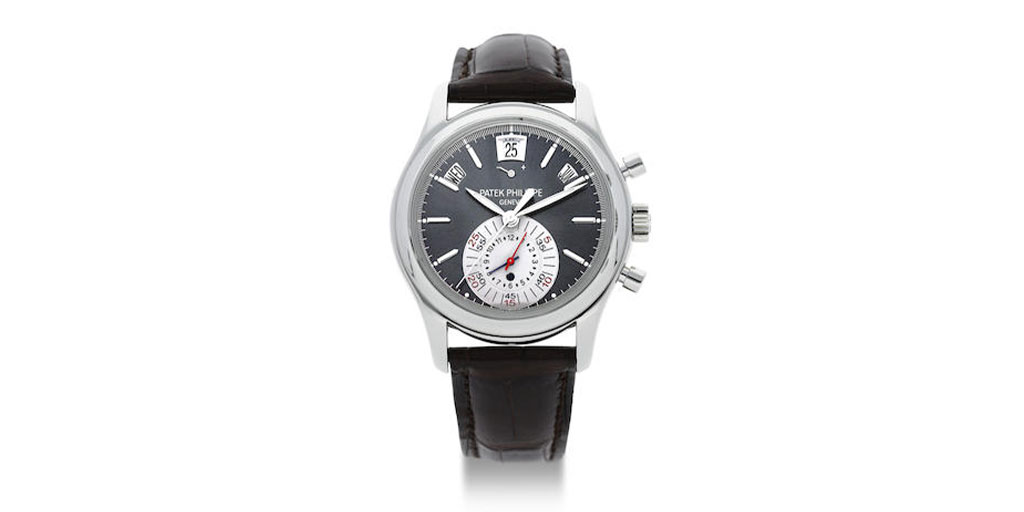
The tenth anniversary of the Annual Calendar in 2006 welcomed two important additions to the family: ref. 5960P and ref. 5396R. With the launch of ref. 5960P, the Annual Calendar went from a small, useful complication to a serious complication with the addition of a fly-back chronograph. Most importantly, the ref. 5960P housed the first Patek Philippe self-winding chronograph, conceived, developed, and manufactured entirely in-house — the caliber CH 28-520 IRM QA 24H. With its large 40.5 mm case and elegant styling, it became an instant classic.
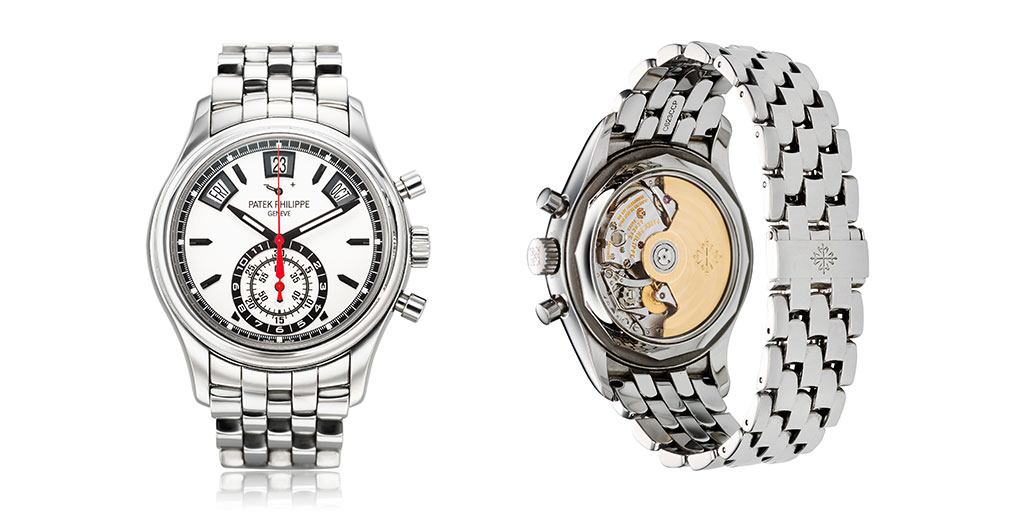
In 2014, the ref. 5960/1A was presented with a steel case and bracelet and the sophisticated yet useful complication became an easy-to-wear sports watch (above).
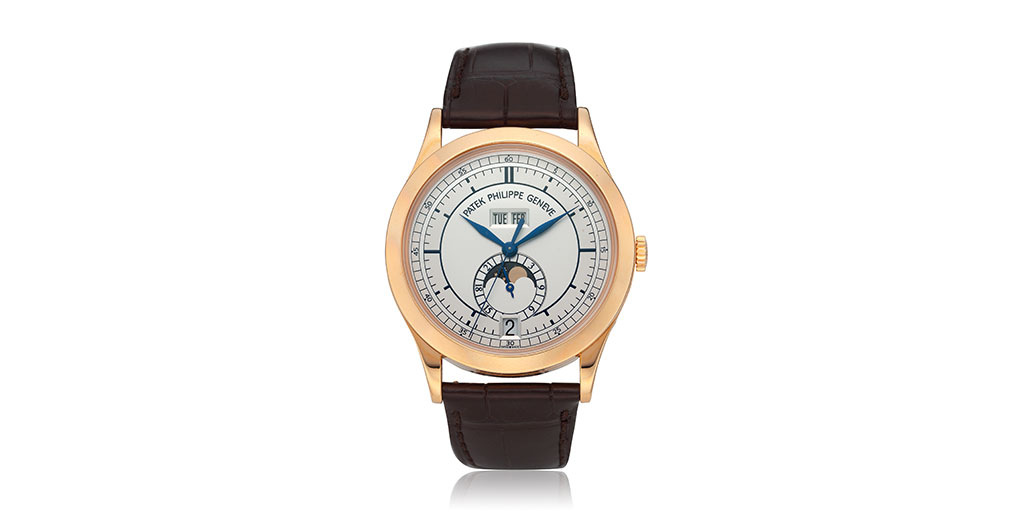
The second piece to be launched in 2006 was the ref. 5396R which for the first time, presented the Annual Calendar in a Calatrava case (above). The 38.5 mm case features a vintage-inspired sector-dial, reminiscent of Patek’s famous calendar watches of the 1940s and 50s (below).

In 2007, the simple, useful complication truly became a grand complication with the addition of a minute repeater. The ref. 5033 combines the minute-by-minute time indication of its complex chiming mechanism with the convenience of an Annual Calendar.

The sleek dial with its large format apertures, is framed by a magnificent, platinum 38 mm x 51 mm tonneau-shaped case. Only the discreet slide on the left-hand side of the case reveals that a highly complex movement powers this watch: the self-winding caliber R 27 PS QA, which consists of 483 parts, assembled by hand.
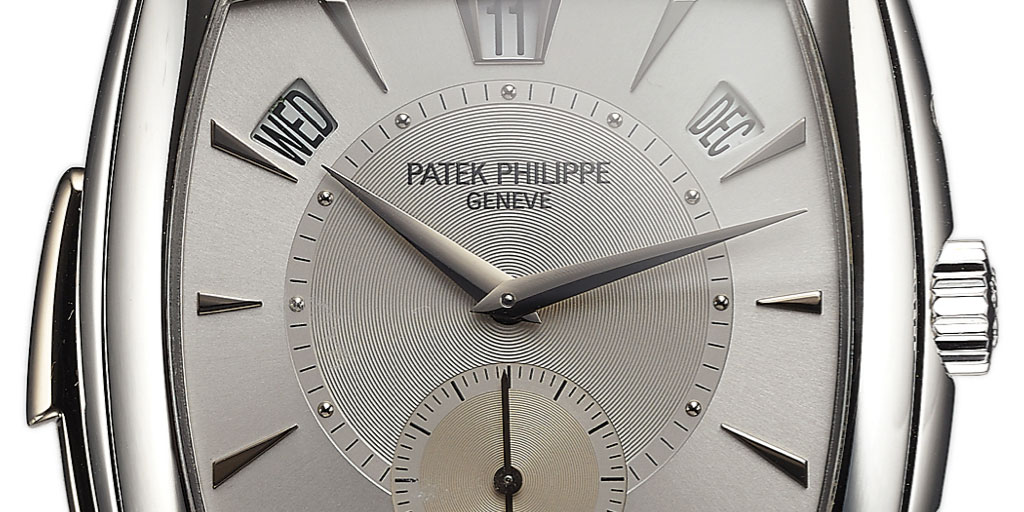
Even at Patek Philippe, only the most talented watchmakers can master this caliber. The base of this movement is the legendary caliber R 27 which was largely responsible for the comeback of the repeater complication in 1989.
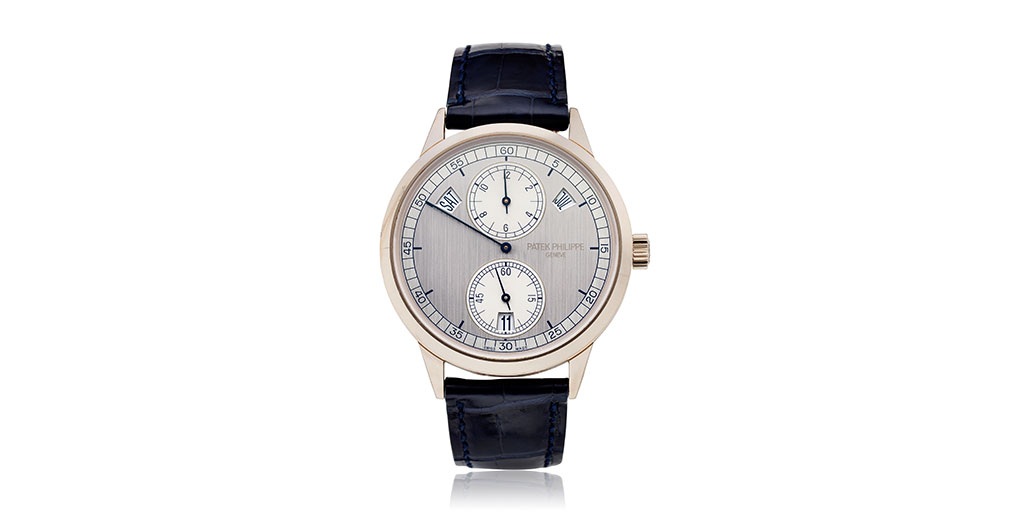
In 2011, the launch of the ref. 5235G Annual Calendar Regulator caused quite a stir. This was a watch unlike any other Patek. Some purists felt it was too modern and outside the portfolio of a traditional watch maker; others praised it for its technological advances and bold styling. For the first time, Patek Philippe made a regulator watch with the hours, minutes and seconds broken out into three separate dials. The dial layout originates from a precision regulator clock, used by watchmakers, in which the hour hand was of secondary importance. The single center hand displays seconds, hours are displayed on the dial at 6 o’clock. The purpose of such a layout was so that watchmakers could focus on the seconds and most accurately adjust the timekeeping of a watch or clock they were working on. Nowadays, electronic timing devices have replaced precision pendulum clocks, but the beauty of their dials remains iconic.
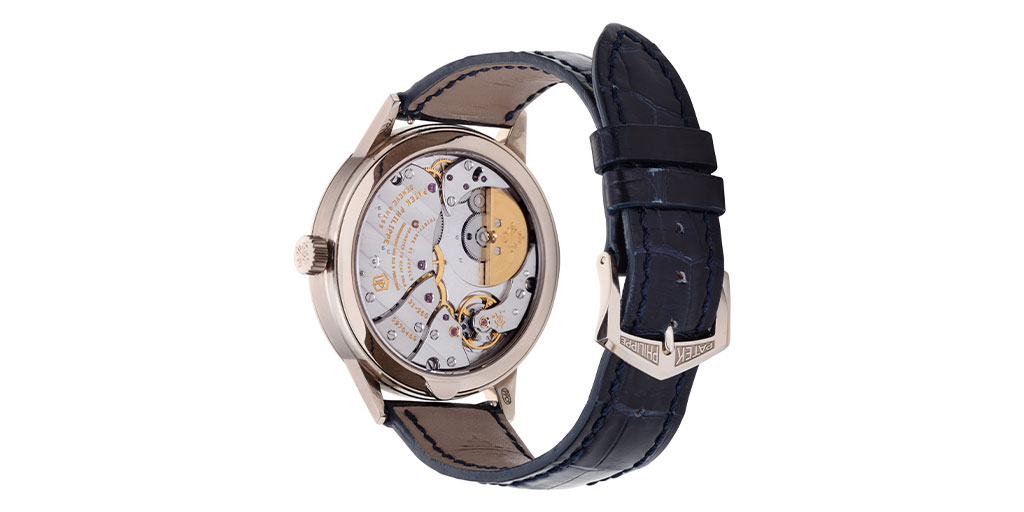
But the Annual Calendar Regulator is more than just a pretty face.Within the larger, 40.5 mm white gold case, was a new, ultra-thin self-winding caliber 31-260 REG QA. In many ways, the new caliber is reminiscent of the legendary self-winding caliber 240 with a sold gold mini-rotor launched in 1977. However, this movement had the might of the then newly established Advanced Research division and all the very latest technology Patek could put behind it. For the first time, Patek equipped a model in its current collection with the Pulsomax® lever escapement, an exclusive and revolutionary system. The lever and the escape wheel of the newly patented escapement were composed of Silinvar®, a high-tech material derived from silicon. Together with the Spiromax® balance wheel made of the same material, and the Gyromax balance, they created a highly efficient oscillator. However, this innovative oscillator and escapement ensemble could not fully deploy its many positive attributes were it not for the optimized going train between the spring barrel and the Pulsomax® escapement. To achieve this, the wheel teeth were endowed with a new profile that would ensure enhanced meshing while reducing friction. The new tooth profile offsets the tolerances that are unavoidable, despite the latest production methods, ensuring a constant force flow with friction losses of merely three percent. Such ingenious advancements increased the power reserve to 60 hours.
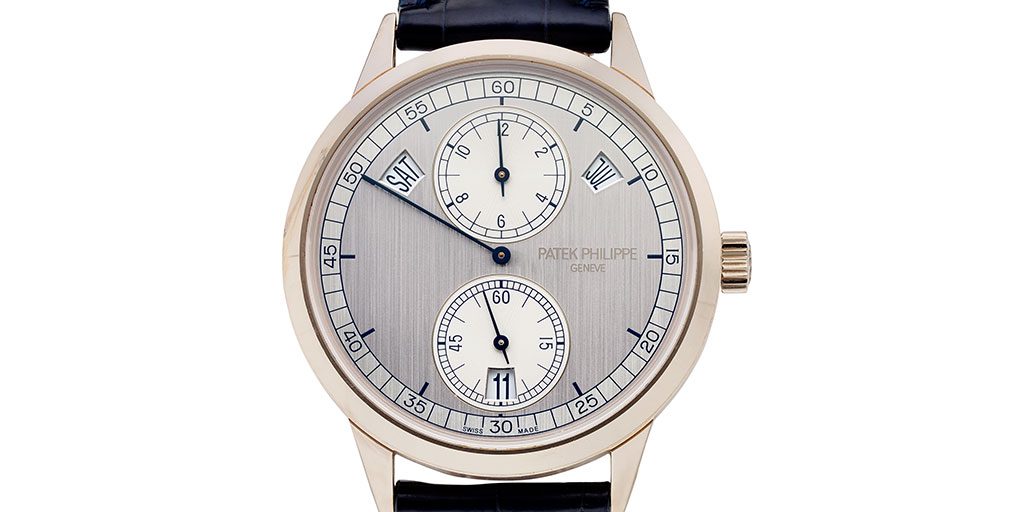
As with the traditional precision pendulum clocks, the use of the regulator dial on the ref. 5235 requires extreme precision regarding display. This required an additional function that further distinguished the caliber 31-260 REG from its 240-role model: a stop-seconds mechanism. When the crown is pulled, a small lever pivots against the Gyromax and stops it. This causes the seconds hand to stand still, allowing the time to be set to one-second accuracy with the aid of a radio signal or regulator. Whatever controversy it may have stirred at its launch, the ref. 5235 represents an impressive bridge between tradition and modernity and the constant quest for precision timekeeping.

The following year in 2012, even the Nautilus had a makeover with the launch of the ref. 5726/1A. The 40.5 mm steel case is water-resistant to 120 m and conceals a caliber 324 S QA LU 24H/303 self-winding movement, comprising 347 parts. Now on the must-have list of many collectors, the first Nautilus Annual Calendar continues to make waves.
This year marks the 25th anniversary of the Annual Calendar and within that quarter century, Patek introduced an extraordinary array of models featuring the ingenious movement. Although not officially to mark this milestone, the ref. 4947/1A was launched this year, the first Annual Calendar in a round Calatrava polished steel case and bracelet. The Annual Calendar was a new movement for a new era when people started to really wear their fine, mechanical watches, rather than just collect. This useful complication did much to shape where Patek Philippe is today with a range of complicated watches unmatched in the industry.
Image credits: all Collectability unless otherwise noted.



